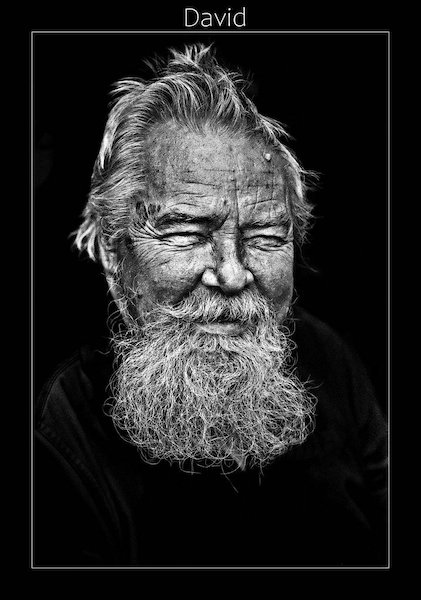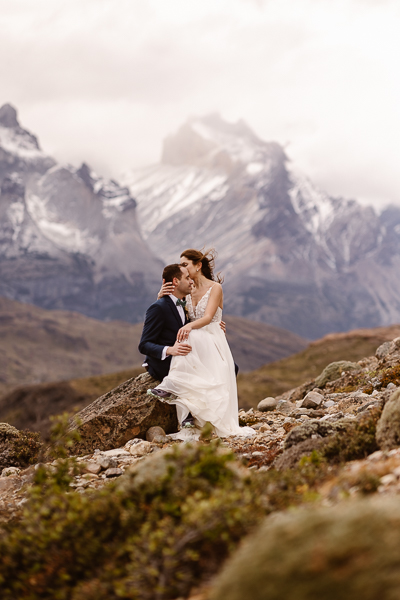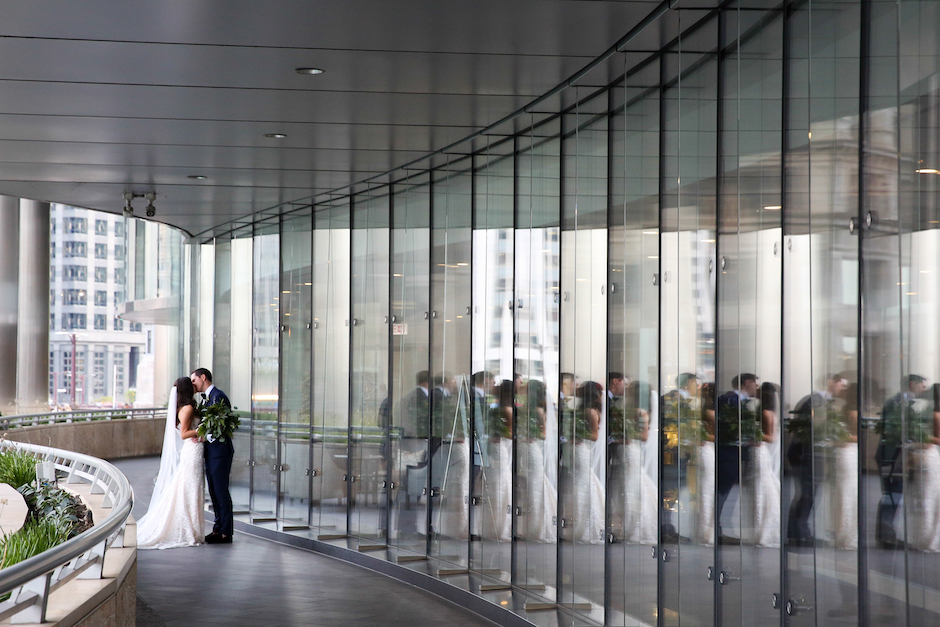Profiles
Photographer Brad Ogbonna Searches For His Artistic Storytelling Identity
June 8, 2018
Why You Should Know Him
New York-based photographer Brad Ogbonna aims his lens on stories that have yet to be told with subjects who are often overlooked. He made a quiet splash this year in a historic project, and a week later, he was named one of PDN’s 30.
Instagram: @bradogbonna
For someone with seemingly boundless talent, Brad Ogbonna shows an impressive level of restraint regarding one of his biggest, most culturally significant projects to date. He can’t talk about it at all. Conventionally, assignments involving a U.S. president are cloaked in at least a thin layer of formalistic secrecy; with this, the 30-year-old photographer can only say that he was in the room during part of the creative process that led to Kehinde Wiley’s painting of former U.S. President Barack Obama, commissioned by The Smithsonian for its collection of presidential portraits.
When it was ceremonially revealed at the National Portrait Gallery in Washington, D.C., in February, alongside artist Amy Sherald’s painting of Michelle Obama, the paintings were all anyone could talk about for a week and a half—that’s roughly two Internet years—not least of all for the historic meaning that the first black president, painted by a black artist, was joining a sea of 43 white presidents. And yet, devotedly, Ogbonna has remained mum on his involvement, save for a few photos of the painting on Instagram (he always posts in threes—more on that later), with the caption, “Extremely grateful and honored to have been part of this.”
As for Wiley—a “living legend” Ogbonna now considers a mentor, who he met through a friend in 2015—a video of him at work on the painting was posted to his feed, with a quick shot of Wiley taping a photographed portrait of Obama next to his canvas for reference.
Ogbonna is used to the inquiries, and he smiles and nods before the question about his involvement is finished. “It was a job of a lifetime to work with two icons,” he says. “I just went to take my family to see the painting in D.C. a couple days ago, and it was a really amazing feeling just to see my cousins respond to it, like, ‘You worked on that?!’ and I’m like, ‘I was…in the room. Let’s just say that.’”
But lately, a level of uncertainty has been seeping in. How can Ogbonna get back to that historic high? And how does a photographer that shoots strong portraits, but who avoids a label, find his next great project and show the world his real integrity as an artist? Part of the answer lies somewhere at the beginning of his journey here.
Starting at Square One
Born in Minnesota to Nigerian parents, Ogbonna went to the University of Wisconsin-River Falls for international studies and political science. For fun, he carried around a Yashica T4 point-and-shoot and a Yashica FX-3 Super 2000 to take photos of his friends hanging out. On a study-abroad trip to Europe, he got even more serious about the medium and started a photo blog called Just Brad.
This was in the early aughts, back when “people went to websites and that was a thing,” Ogbonna says. Photographers were on Facebook, but not yet as business pages. Instagram didn’t exist. But blogs did, and his was gaining traction online. A connected friend passed Just Brad onto a Minneapolis agency that needed someone to shoot New York Fashion Week for a campaign with Diet Coke. This became Ogbonna’s first assignment.
His photos from it got good airtime, including on the digital billboards in Times Square. “I showed it to my dad, and he was like, ‘That’s nice. What about a real job?’” Ogbonna recalls with a smile. “My culture…there’s not a lot of emphasis on nurturing creativity or pursuing jobs in a creative field.”
The idea of becoming a photographer seemed realistic, but nevertheless, Ogbonna was in pursuit of that “real job,” searching media job boards and NGOs, perhaps to work toward ambassadorship, but he could only find 40-hour unpaid internships. A few months later, around Thanksgiving, his dad became very ill. It was an aggressive form of cancer, and he passed away the day after Christmas.
“After that, I was deeply depressed and just sad about everything,” Ogbonna says. “As Nigerians, we get buried at home, like literally in front of the home you grew up in.” He flew to Nigeria, the first time in his adult life, and he stayed for two months to shoot a short film about his time there. He shot some amateur footage and even more photos, so he decided to make a book instead.
Holing himself up for two months to make it was a therapeutic process, piecing together the photos with his thoughts on the trip into Jisike, which he self-published through Kickstarter in 2012. In the Nigerian language Igbo, jisike is a word of encouragement, he explains, “like ‘keep going, everything will be alright, stay strong.’”
It resonated; Ogbonna quickly sold all 2,000 copies. It landed in the laps of an editor at VICE, who asked him to take part in a project for the African denim brand Diesel+Edun and Studio Africa, shooting behind-the-scenes photos of music videos shot in Johannesburg, Nairobi and Nigeria.
“When I got back from that, I was super confident and, I wouldn’t say cocky, but it was affirming,” Ogbonna recalls. “I was like, I’m going to line up a bunch of campaigns and everyone’s going to be dying to work with me, but it wasn’t like that at all. I went on Craigslist every day looking for jobs, reached out to my circle as much as I could, and slowly started building my contacts, shooting small jobs like headshots and random assignments. It was a slow build, for sure. I had a lot more to learn about the industry.”
Ogbonna emailed several photographers offering to assist and heard back from just one: Aaron Richter, a Brooklyn-based celebrity portrait photographer. The next two and a half years were spent learning how to nurture relationships, communicate with clients, navigate a set and market his work. “At the time I was just sending out emails like ‘Hey, look at me, look at my website,’” says Ogbonna, so Richter showed him how to put together a promo. Ogbonna sent out 50 or 60 copies of his first one to different editors and heard back from The New York Times, The Wall Street Journal and an editor at Bloomberg Businessweek who was moving to The FADER, one of Ogbonna’s dream clients. Today, he shoots for these outlets and more—GQ, Esquire, New York, W, Fortune and Forbes among them.
Over the last year and a half, the photo industry has been rushing to diversify, Ogbonna says, “and that’s cool, I’m with it. I’m trying to capture people that I find interesting and who I feel like are often times left out of the conversation.”
Tuning In
Ogbonna wakes up in the morning and turns on NPR. He heads out to shoot a fashion editorial, or portraits of businessmen and women for a money magazine, or a campaign for Google or Jack Daniel’s, or photos of friends. Then he plays or watches basketball. As someone who actively interacts with the world around him, he calls on all sides of himself to inform his work, which he prefers to categorize loosely: a photographer that tells stories, and travels.
As Ogbonna sees it, his career dovetails nicely from his international studies. Last year, one project took him to Beijing and Shanghai, others to Bermuda, Morocco and the Congo. “I like to take on all these kinds of projects because they’re usually all of interest to me. I truly don’t have a preference. I’m really just into everything.” Every once in a while, he gets a call from Wiley to meet him somewhere for a gig. “He’s around the world all the time, so he could be in Senegal and call and say, ‘We’re going to Haiti in three days, you ready?’ and I’m like, ‘Yeah, cool,’ and rearrange my schedule.”
Recently, Ogbonna worked with Wiley on a project in St. Louis, Missouri, street-casting people from barbershops, fish fry joints, in the streets of Ferguson, “right where Michael Brown was shot,” for portraits. The series, Kehinde Wiley, will show at the Saint Louis Art Museum this fall.
“Kehinde is working on a different scale,” Ogbonna says. “The world seems a lot more reachable. Seeing the projects he’s working on is inspiring to look at my own work and see how I can expand it.”
Lately, he’s been feeling the itch to go somewhere for a couple of months and work on something personal. “I feel like people keep telling me now that I’m a portrait photographer, but I’m like, ‘No, I tell stories too, let me just show you,’” he says.
This extends to his approach to Instagram; he posts three photos serially, by shoot. “I feel like it’s good practice to show different angles. Sometimes when I look at my feed before I did that, it feels weird because everything’s a one-off. It just felt scattered. Now when I post in threes, things have a beginning and an end.”
Clients seem to like it, too. Ogbonna estimates that about 90 percent of the time, they’re reaching out to him instead of the other way around. That sounds cozy, but the statistic makes Ogbonna a little uneasy. “I need to do more. I feel like I could be doing more. I will just flip things to Instagram and kind of walk away from it and think people will respond to it, but I need to start more conversations. But I’m kind of just waiting until I get my promo out.”
He’s working on his third right now. The challenge: integrating what he’s been shooting with what he wants to shoot more of in the future. “I’m at that point where I’m like, what am I now? I don’t even know anymore. But with the promo, it’s a good chance to get people’s attention and lead them in the right direction. I need to rework how I do that while still being cohesive.”
Impending Bloom
During one of his travels, he had a chance encounter with an ambassador, someone he might have become had he not fallen for photography. “I told him what I had studied in school and how I became a photographer, and he goes, ‘Oh, wow, you’re supposed to be doing what I’m doing.’ And I said I had kind of lost interest and he’s like, ‘Well, whenever you’re ready, just take the test and you can join us.’ I hadn’t thought about it that way. ‘Just keep doing what you’re doing and if you’re ready, the job is still here.’ Which is nice to think about down the line, but I feel good about my trajectory and the path that I’ve been on.”
The industry seems to agree; earlier this year, Ogbonna was chosen as a PDN’s 30. “I showed my aunt, uncle and my mom the issue of PDN, and they were really happy,” he recalls. “They just saw my picture, and I was like, ‘You can read it,’ and they were like, ‘Ah, we’ll get to it.’”
Ogbonna hasn’t needed to prove his career for a while now, especially after a job that took him to Nigeria in 2016. His mother happened to be there too. “I didn’t tell her I was coming,” he says, but then he surprised her with a phone call from Maison Fahrenheit, one of the nicest hotels in Lagos. “I said, ‘Come to this hotel for lunch.’ She showed up with my aunt and asked what I was doing there. I said, ‘I’m here for work’“ and then treated them to food and drinks. When the bill came, he told them, “‘Don’t worry, someone else is taking care of it,’ and she was like, ‘Wow, okay, yeah—you are a photographer.’”
The full circle phenomenon isn’t lost on Obgonna: burying his father led to a trickle, then a cascade of events, solidifying him as a well-grounded photographer to watch. It has since allowed him to return to Nigeria again and again, more than he had growing up, to get to know his culture better, and himself.
Assignments: Canon 5D Mark III with 85mm f/1.2 or Sigma 35mm f/1.4 Art lens
Personal Work: Mamiya 645 Pro AFD with 80mm lens, Mamiya RZ67 with 110mm lens, Canon EOS 1N 35mm SLR
Related: How Fashion Photographer Emily Soto Stays Avant-Vogue with Film
The Ever-Clever Olivia Locher’s Dance With Virality
Photographer You Should Know: Frieke Janssens, Portrait Provacateur





